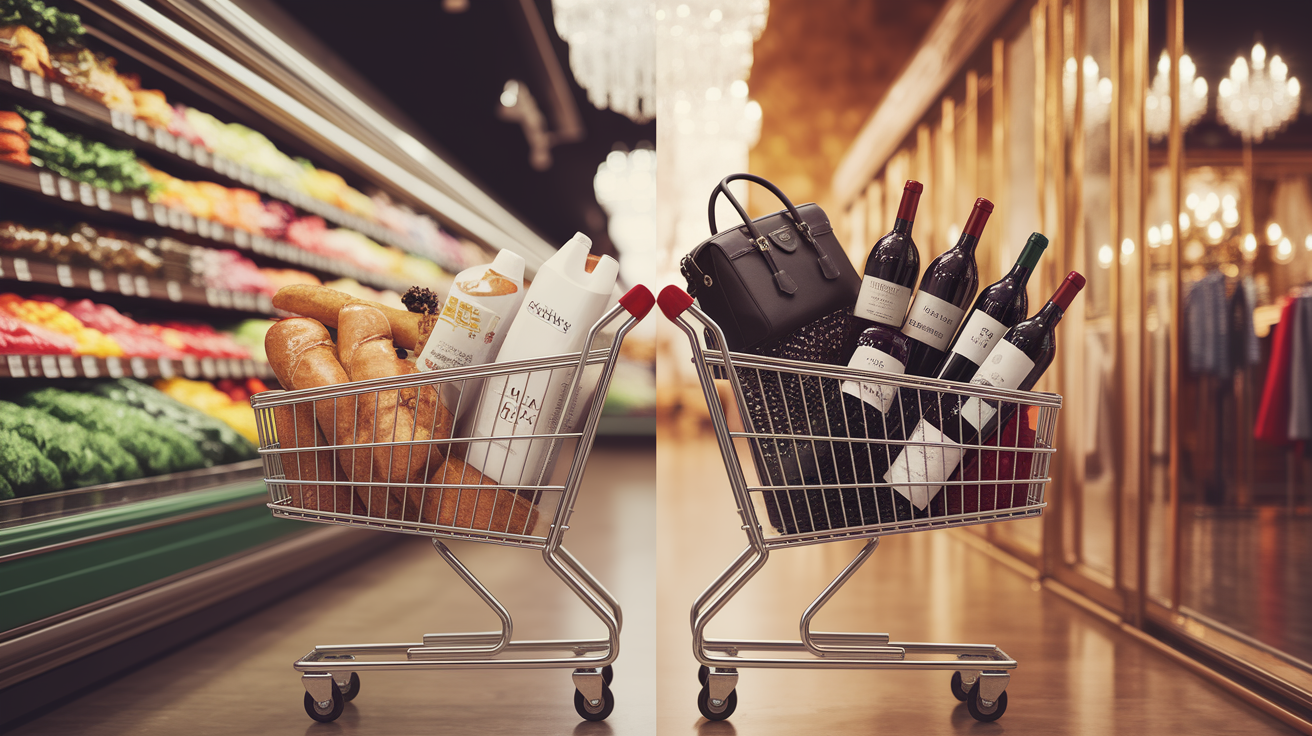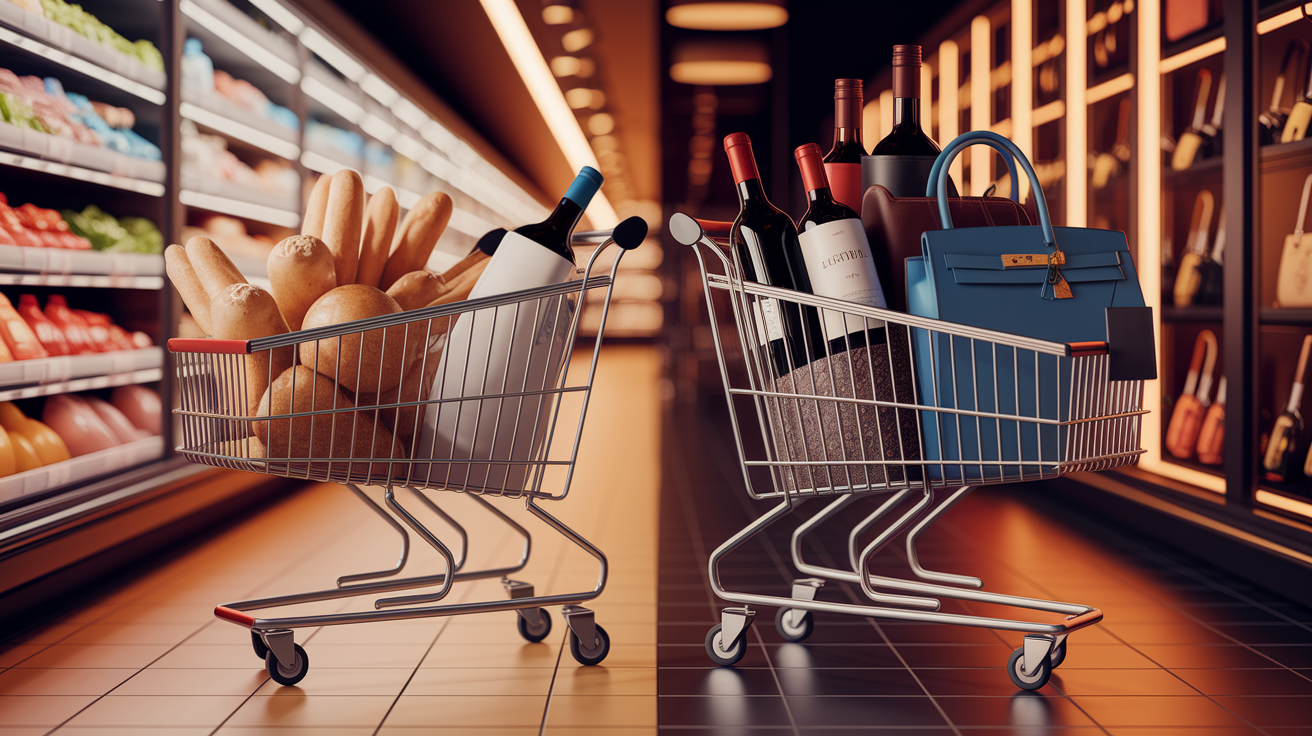In the stormy seas of an uncertain economic situation, consumers navigate the market for consumer goods and luxury goods with different strategies. While some seek affordable everyday goods to limit spending, others invest in luxury goods as an expression of status and prosperity. This article highlights how economic uncertainty and digitalization shape consumer behavior in these two sectors and what opportunities arise for investors and private savers.
Tensions in Spending Habits: Consumer Goods vs. Luxury Goods in Uncertain Times

In a world characterized by economic uncertainties, consumer spending habits change drastically, especially regarding consumer goods versus luxury goods. During economic fluctuations, consumer goods become a priority for many, as these products are essential for daily needs and often constitute the cornerstone of consumption. Consumers find themselves needing to prioritize their spending. As a result, fundamental needs like food and household products take precedence, while less essential items are pushed to the back.
Signs of an increasing cost-conscious mindset are evident when people begin to behave price-consciously, consistently looking for deals and preferring more affordable alternatives to well-known brand products. Supermarkets and retail stores offering discounts and price reductions become the primary places for purchasing consumer goods. Here, consumers often kill two birds with one stone: they help save the budget while minimizing impulsive spending.
On the other hand, the luxury goods market, although also influenced by uncertainty, reacts quite differently. Luxury goods are often the first victims of budget cuts, as they are perceived as non-essential. However, there is a particular segment of buyers who, despite the stormy clouds of the economy, continue to invest in quality and prestige. These buyers associate their investments in luxury products with aspects such as status, reputation, and an hedonic consumption experience.
Although the demand for luxury goods may tend to decrease, these products continue to maintain an aura of exclusivity and quality that fosters customer loyalty. Particularly distinctive niche markets can continue to thrive by responding to specific needs or emerging trends.
In summary, economic uncertainty vigorously shakes consumer behavior in both consumer and luxury goods, but to a very different extent. While consumers of consumer goods are guided by rules of necessity and frugality, those who choose luxury brands keep an eye on quality and prestige, even when the storm of uncertainty rages. Although these patterns evolve, the divergence between necessary and extravagant consumption remains a fascinating field of economic and sociocultural observations.
The Digital Revolution: How Technology Shapes Consumer Behavior in Consumer and Luxury Goods

In the complex reality of the current economic situation, digitalization plays a fundamental role in consumer behavior, both in consumer and luxury goods. While traditional shopping habits are increasingly challenged by the influence of digital technologies, new opportunities and questions arise for both consumers and companies.
Consumer Goods: From Mass Economy to Personalized Shopping Experience
The growing significance of e-commerce is perhaps the most evident sign of digitalization in the consumer goods sector. Consumers appreciate the convenience of comparing and ordering products online without having to leave home. This development leads to increased transparency and enhanced efficiency in the consumer goods industry. Companies rely on AI-supported demand forecasting to manage inventories more efficiently and minimize stockouts. At the same time, personalization through artificial intelligence allows targeted advertising campaigns to meet individual customer needs, increasing satisfaction and conversion rates.
Luxury Goods: Exclusivity Meets Digital Innovation
In the luxury segment, digitalization has a double-layered effect. On one hand, it intensifies the emotional connection of consumers with brands through digital branding. Virtual events and personalized online experiences offer a new dimension of exclusivity that transcends physical boundaries. On the other hand, consumers are increasingly seeking authenticity and sustainability, reflecting values that go beyond status in uncertain times. Here, digital platforms provide a crucial advantage: they allow luxury brands to communicate and evaluate these values convincingly.
Effects in Times of Economic Uncertainty
Digitalization has the potential to increase consumers’ cost awareness. In times of economic uncertainty, digital tools enable consumers to effectively compare prices and identify deals that fit their financial capabilities. At the same time, this technological revolution promotes a values-oriented approach towards sustainable and ethical purchase decisions. The flexibility that digitalization offers to companies means they can respond strategically more quickly to market changes to remain competitive.
Ultimately, digitalization fosters greater customer awareness and flexibility in consumer behavior. This applies to both consumer and luxury goods. Companies that actively manage digital transformations are better prepared to meet the evolving needs of consumers and fit into a dynamic economic environment.